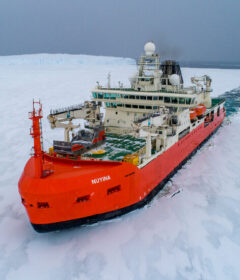Aerial survey confirms severe damage to Great Barrier Reef from latest coral bleaching
The decline in Australia’s Great Barrier Reef, the world’s largest living structure, is accelerating, exacerbated by record sea temperatures, a leading coral scientist concluded after an extensive aerial survey.
The survey results confirm earlier indications that large parts of the reef had suffered a third mass coral bleaching event in five years.
This year’s bleaching is severe and more widespread, said Professor Terry Hughes, director of the ARC Centre of Excellence for Coral Reef Studies at James Cook University in Townsville, Queensland.
Prof Hughes and a colleague from the Great Barrier Reef Marine Park Authority, which manages the 2,300km reef along Queensland’s coast, carried out the survey during the last two weeks of last month.
They inspected 1,036 reefs from a small plane flying about 150m above the ocean surface, recording the various degrees of bleaching suffered by reef-building corals.
“For the first time, severe bleaching has struck all three regions of the Great Barrier Reef – the northern, central and now large parts of the southern sectors,” he said.
Widespread coral bleaching is caused by prolonged heat stress due to spikes in sea temperatures during unusually hot summers.
This year, February had the highest monthly sea surface temperatures ever recorded on the Great Barrier Reef since the Australian Bureau of Meteorology’s records began in 1900. The warm temperatures continued into last month, adding further heat stress for corals.
Globally, reefs are facing escalating risks from climate change because of rising temperatures caused mainly by the burning of fossil fuels.
Marine heatwaves and bleaching events are becoming more frequent, with five hitting the Great Barrier Reef since 1998 and three since 2016.
Corals are particularly sensitive to sharp spikes in sea temperatures.
When heat-stressed, corals expel photosynthetic algae, called zooxanthellae, which give the corals their colour. The algae provide food for the corals but once expelled, the corals turn pale when stressed, and a ghostly white when severely heat-stressed or when they die.
If the marine heatwave lasts several weeks or more, some corals die. Others can recover but the process can take months.
This is what happened during back-to-back bleaching episodes in 2016 and 2017, when about half of the shallow-water corals died in the northern and central sections of the Great Barrier Reef.
The latest bleaching event has killed yet more corals and set back the natural recovery process, which usually takes a decade.
The findings cast further doubt on the reef’s future and its ability to recover from more frequent bleaching events, said Prof Hughes.
“The Great Barrier Reef is in rapid decline. The mix of species is rapidly changing, there is a loss of biodiversity. It is clear evidence of the threat of global warming to a huge tourism industry (in Australia) that employs 65,000 people,” he told The Straits Times yesterday. “The significance of the three severe events in just five years is that it takes about a decade to recover from an event as extreme as any one of these. Now with rapid-fire multiple bleachings every year or two, that recovery has been truncated by the next bleaching. So we’ve lost a huge amount of corals on the reef.”
He said about 40 per cent of the reefs surveyed had little or no bleaching, a further 35 per cent had more modest levels of bleaching and the remaining 25 per cent were severely affected.
The accuracy of the aerial observations has been verified by underwater surveys on reefs that are lightly and heavily bleached.
“We won’t know yet how many corals have died as a consequence of this bleaching event,” he said.
Follow-up surveys will be carried out in the coming months to determine this. But the results mean very little of the reef remains undamaged by bleaching events.
“These events are cumulative. Even a mild one adds to the previous damage,” he said.
READ MORE STORIES ON CLIMATE CHANGE
Source: Read Full Article


